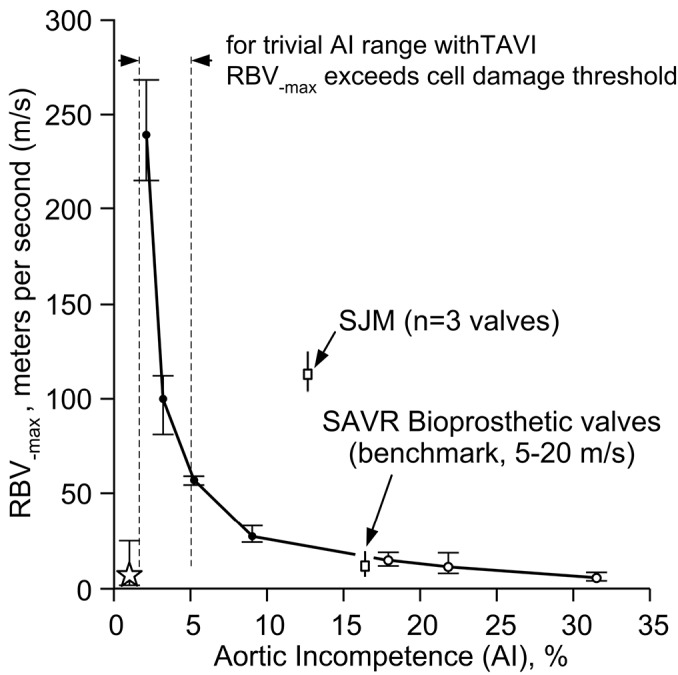Figure 3.

The mock-TAVI (mTAVI) device under various paravalvular conditions with aortic valve incompetence (AI) =1-32%. The ideal TAVI paravalvular condition (Star data point) is AI near ZERO. This negates large transients of regional backflow velocity (RBV–max) where least thrombogenic potential is inferred. Black data points include trivial AI where intense transients generated by the closing valve infer high thrombogenic potential. White data points (AI>15%) have lower RBV–max flow transients, however, transvalvular energy loss will increase during the closed valve interval with AI increase. The mean RBV–max and range of variation for each experiment are shown (vertical bars, n=10 consecutive cycles). Suggested thrombogenic benchmark based on testing several bioprostheses with no paravalvular leakage (PVL) is shown for surgical aortic valve replacement (SAVR) reference. St Jude Medical (SJM) size 25 mm valve results is also shown for SAVR reference for a mechanical heart valve (MHV) with PVL = zero.
